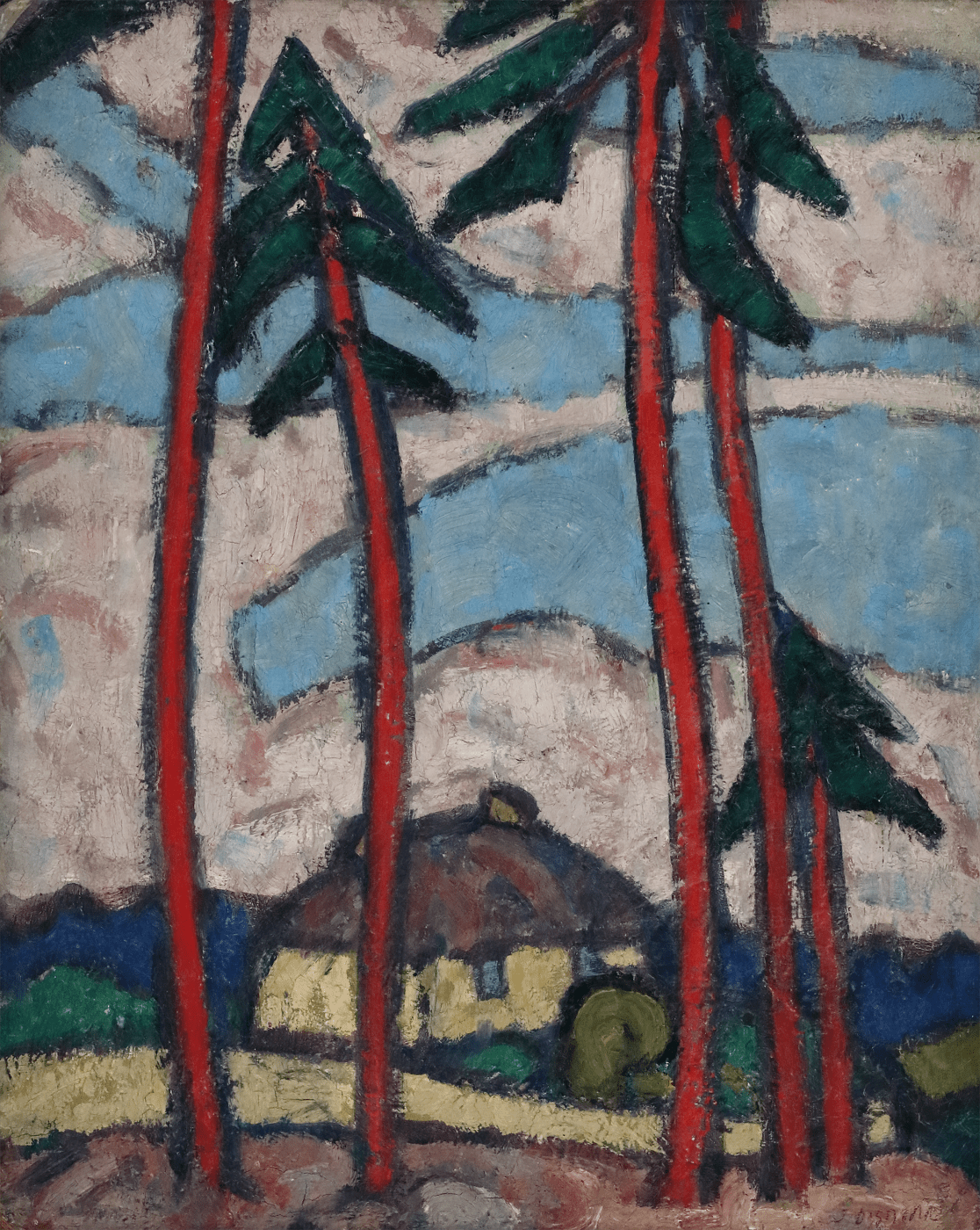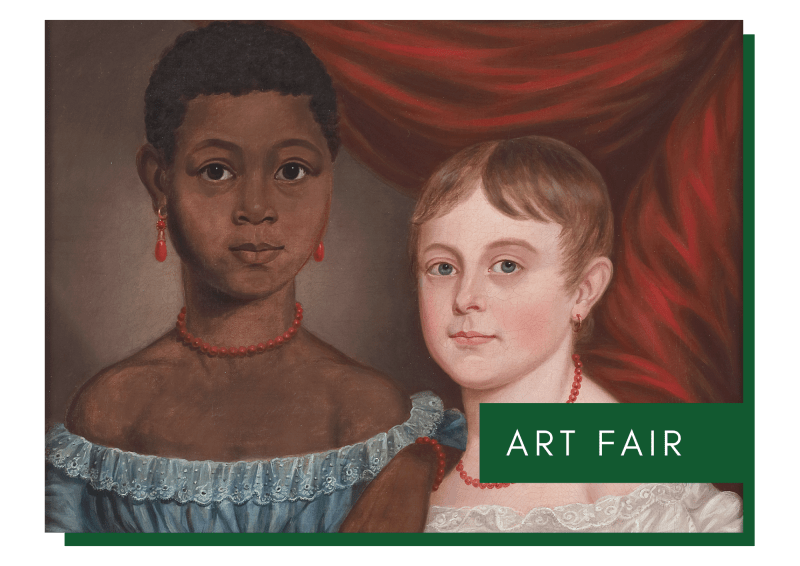Full Biography
Dismorr positioned herself as one of the few British artists to explore Post-Impressionism before Roger Fry's radical 1910 exhibition 'Manet and the Post-Impressionists.'
Jessica Dismorr was an experimental force within twentieth-century modernism. A frontrunner of British abstraction, a signatory of the radical Vorticist movement, and a politically engaged professional artist, Dismorr’s artistic imprint on British art is marked.
She began her artistic training at the Slade School of Fine Art in 1902, which was the only art school of the period that permitted women to study from the life model, as men did in other institutions. She furthered her training in France, where she studied in Étaples, at the art school run by Max Bohm, and later at the Academie de la Palette in Paris.
Dismorr aligned herself with the Rhythm group as well as with the Vorticists. Dismorr and the artist Helen Saunders were the only women to be associated with the Vorticists, although they were later aggressively written out of the history of Vorticism by the self-appointed leader, Wyndham Lewis.
In 1925, the Mayor Gallery, London, held the first and only solo exhibition of Dismorr’s work in her lifetime.
Although she did not receive the recognition she deserved during her lifetime, her work has since been celebrated for its innovation and major contribution to the development of modern art. Today, her artworks are held in the collections of major museums across the world, including the Tate Gallery, London, the Museum of Modern Art, New York, and the Art Institute of Chicago.
Jessica Dismorr, whose works are currently offered for sale at Philip Mould & Company, was an experimental and virulent force within twentieth-century modernism. A frontrunner of British abstraction, a signatory of the radical Vorticist movement, and a politically engaged professional artist, Dismorr’s artistic imprint on British art is marked.
She was born in Gravesend in Kent, on 14th March 1885, the fourth of five daughters to John Stewart Dismorr and Mary Anne Rebecca Clowes. Born into an affluent family, Dismorr is likely to have received a formal education and, as the daughter of a wealthy businessman, inherited financial freedom.[1] [2] Still, Dismorr's interest in art began at a young age, and she began her artistic training at the Slade School of Fine Art in 1902, which was the only art school of the period that permitted women to study from the life model, as men did in other institutions. She furthered her training in France, where she studied in Étaples, at the art school run by Max Bohm, and later at the Academie de la Palette in Paris.
Her early works are influenced by her time in France, particularly Paris, where she positioned herself as one of the few British artists to explore Post-Impressionism before Roger Fry's radical 1910 exhibition Manet and the Post-Impressionists. Taking advantage of progressive and forward-thinking art movements, Dismorr aligned herself with the Rhythm group, a group of artists influenced by the Fauvist painters, founded in 1912 by J. D. Fergusson, whom Dismorr studied under at the Academie de la Palette. Her early works are distinguishable for their bold, linear qualities and intensely expressive engagement with fauvist colour theories. The Rhythm group held two group exhibitions in 1912, one of which ran concurrently with Roger Fry's second Post-Impressionist exhibition. Many contemporary critics were confused by Fry’s omission of the Rhythmists, with art critic Paul G. Konody pondering the exclusion of Dismorr and her contemporaries:
It is very difficult to understand why no place should have been found in Grafton Street for the very interesting work of Messrs, Peploe and Feransson, Miss A.E.Rice, Miss Jessie Dismorr and Miss Ethel Wright.[3]
In 1914, Dismorr joined the Rebel Art Centre which was an organisation co-founded by artists Kate Lechemere and Wyndham Lewis, established to rival the artistic theories of Roger Fry. Ezra Pound initiated the name ‘Vorticism’ for the movement of eleven artists and writers and Dismorr became a signatory of the Vorticist manifesto, BLAST. Although the movement was short-lived, the Vorticists were a highly influential avant-garde movement, which sought to create a new visual language that reflected the dynamism and energy of modern life. Dismorr and the artist Helen Saunders were the only women to be associated with the Vorticists, although they were later aggressively written out of the history of Vorticism by the self-appointed leader, Wyndham Lewis. Very few of her vorticist works survive today, many of which are documented in Vorticist exhibition catalogues, but those that do survive are important examples of dynamically abstract painting.
During the First World War, Dismorr worked as a nurse in France, an experience that impacted her profoundly, both personally and professionally. Unable to access the materials she needed to paint, she satisfied her desire for artistic expression through writing and poetry, a practice she continued for the rest of her career. When she returned, she continued to create abstract works for a couple of years, before returning wholly to figuration, although they resembled little of her earlier figurative works. Her palette became more restrained and the subject matter more introspective. Although she continued to paint landscapes, she began to focus more intensely on portraits, particularly of figures she admired, including friends and family.
In 1925, the Mayor Gallery, London, held the first and only solo exhibition of Dismorr’s work in her lifetime and it is around this date that she begins to exhibit as ‘Jessica Dismorr’ as opposed to ‘Jessie Dismorr’. From 1926, she was elected to The London Group (which was formed from the male-only Camden Town Group and the Fitzroy Street Group in 1913) and elected to the Executive Committee of the Seven and Five Society, whose chair at the time was Ben Nicholson.
Dismorr’s constant awareness of her work in relation to the wider political and social landscape increased during the political ferment of the years before the Second World War. She continued to paint figuratively with a heightened sense of urgency throughout the first half of the 1930s, however, after viewing the Unit One exhibition in 1935 (the first wholly abstract exhibition in England) Dismorr’s work became purely abstract.[4] Motivated by her response to the global turmoil of the later 1930s, Dismorr produced highly charged abstract works and aligned herself with artistic organisations mounting a cultural battle against the rise of far-right politics.[5] Amongst the last paintings that Dismorr exhibited was with the Artists International Association (AIA), a group of artists who fiercely opposed fascism. Before the show ended, Dismorr died on August 29, 1939, at the age of 54.
Although she did not receive the recognition she deserved during her lifetime, her work has since been celebrated for its innovation and major contribution to the development of modern art. Today, her artworks are held in the collections of major museums across the world, including the Tate Gallery, London, the Museum of Modern Art, New York, and the Art Institute of Chicago.
[1] A. Foster, Radical Women: Jessica Dismorr and her Contemporaries. Chichester/London: Pallant House Gallery/Lund Humphries, 2019, p.10.
[2] C. E. Heathcock, Jessica Dismorr (1885-1939): Artist, Writer, Vorticist. The University of Birmingham PHD, p.6.
[3] P. G. Konody, ‘Art and Artists: English Post-Impressionists’, The Observer, 27 October 1912.
[4] A. Foster, Radical Women: Jessica Dismorr and her Contemporaries. Chichester/London: Pallant House Gallery/Lund Humphries, 2019, p.74.
[5] A. Foster, Radical Women: Jessica Dismorr and her Contemporaries. Chichester/London: Pallant House Gallery/Lund Humphries, 2019, p.73.






